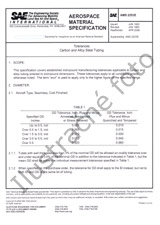Potrebujeme váš súhlas na využitie jednotlivých dát, aby sa vám okrem iného mohli ukazovať informácie týkajúce sa vašich záujmov. Súhlas udelíte kliknutím na tlačidlo „OK“.

SAE J473
Solders
NORMA vydaná dňa 1.8.2018
Informácie o norme:
Označenie normy: SAE J473
Dátum vydania normy: 1.8.2018
Kód tovaru: NS-857691
Krajina: Americká technická norma
Kategória: Technické normy SAE
Anotácia textu normy SAE J473 :
The choice of the type and grade of solder for any specific purpose will depend on the materials to be joined and the method of applying. Those with higher amounts of tin usually wet and bond more readily and have a narrower semi-molten range than lower amounts of tin.
For strictly economic reasons, it is recommended that the grade of solder metal be selected that contains least amount of tin required to give suitable flowing and adhesive qualities for application.
All the lead-tin solders, with or without antimony, are usually suitable for joining steel and copper base alloys. For galvanized steel or zinc, only Class A solders should be used. Class B solders, containing antimony usually as a substitute for some of the tin or to increase strength and hardness of the filler metal, form intermetallic antimony-zinc compounds, causing the joint to become embrittled. Lead-tin solders are not recommended for joining aluminum, magnesium, or stainless steel.
Permissible impurity levels are shown:
In dipping solders, 0.5% max copper is permissible because of pickup in bath.
Compositions, temperatures, and similar specifications of these SAE solders are shown in Table 1.
SUBFILE: Automotive
TYPE OF DOCUMENT: Ground Vehicle Standard
Stabilized: Aug 2018 
Odporúčame:
Aktualizácia technických noriem
Chcete mať istotu, že používate len platné technické normy?
Ponúkame Vám riešenie, ktoré Vám zaistí mesačný prehľad o aktuálnosti noriem, ktoré používate.
Chcete vedieť viac informácií ? Pozrite sa na túto stránku.



 Cookies
Cookies
